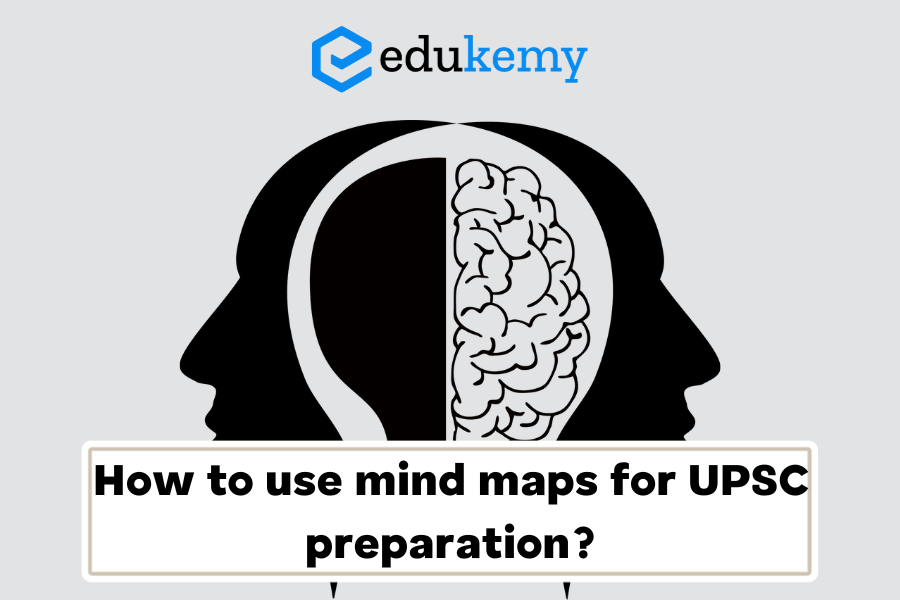
The journey to cracking the UPSC (Union Public Service Commission) exam is undoubtedly challenging. With a vast syllabus and diverse subjects to cover, aspirants often find themselves overwhelmed by the sheer volume of information. In this scenario, an effective study strategy becomes crucial, and one such powerful tool is the mind map.
Contents
What is a Mind Map?
A mind map is a visual representation of information, ideas, and concepts organized around a central theme. It is a graphical tool that facilitates brainstorming, planning, and problem-solving. Using mind maps for UPSC preparation can significantly enhance your understanding, retention, and recall of complex topics.
Here’s a step-by-step guide on how to integrate mind maps into your UPSC preparation:
- Choose the Right Topics:
- Identify the key subjects and topics in the UPSC syllabus.
- Prioritize topics based on their relevance and weightage in the exam.
- Start with a Central Theme:
- Select a central theme for your mind map, which could be a subject or a specific topic.
- Place it at the center of the page to create a focal point.
- Branch Out the Main Ideas:
- Create branches radiating from the central theme for major topics within the subject.
- Each branch represents a main idea or concept.
- Add Sub-branches for Details:
- Break down main ideas into sub-branches for more detailed information.
- Include keywords, facts, and examples to make the mind map comprehensive.
- Use Visual Elements:
- Incorporate colors, symbols, and images to make your mind map visually appealing.
- Visual elements enhance memory retention and make the mind map more engaging.
- Connect Ideas:
- Use lines or arrows to connect related ideas and show their relationships.
- This helps in understanding the interconnectedness of different concepts.
- Condense Information:
- Focus on summarizing information rather than creating lengthy notes.
- Use keywords and concise phrases to capture the essence of each idea.
- Regularly Review and Revise:
- Periodically revisit your mind maps to reinforce learning.
- Update and revise the mind maps as you progress in your preparation.
- Create Subject-specific Mind Maps:
- Develop mind maps for each subject, dividing them into subtopics for better organization.
- This approach allows you to have a quick overview of the entire subject.
- Combine with Other Study Tools:
- Integrate mind maps with traditional note-taking methods, textbooks, and online resources.
- The combination of various study tools enhances your overall learning experience.
Conclusion:
Mind maps serve as a dynamic and efficient study aid for UPSC aspirants. By visually organizing information, connecting ideas, and condensing complex topics, you can streamline your preparation process and boost your chances of success. Remember, the key lies not only in creating mind maps but in consistently using them as an integral part of your study routine. So, unlock the potential of mind maps and pave the way to triumph in the UPSC examination.
Frequently Asked Questions (FAQs)
1. What is a mind map, and how can it benefit UPSC preparation?
A mind map is a visual representation of information, concepts, and ideas, organized around a central theme. It helps in structuring and summarizing complex information. For UPSC preparation, mind maps can aid in better retention, understanding, and revision of topics.
2. How do I create a mind map for UPSC subjects?
Start with a central topic, such as a subject or a specific theme. Branch out with main ideas and create sub-branches for related concepts. Use keywords, colors, and images to enhance visual memory. Keep it concise and focused.
3. Which UPSC subjects can benefit the most from mind mapping?
All UPSC subjects, including history, geography, polity, economics, and current affairs, can benefit from mind mapping. It’s particularly useful for subjects with a large volume of interconnected information.
4. Can I use digital tools for creating mind maps?
Yes, there are various digital tools like XMind, MindMeister, and others that allow you to create interactive and shareable mind maps. These tools often provide additional features such as collaborative editing and integration with other study materials.
5. How can mind maps help in revision?
Mind maps serve as concise summaries of topics, making them ideal for quick revision. By reviewing the key points and relationships on a mind map, you can refresh your memory efficiently.
In case you still have your doubts, contact us on 9811333901.
For UPSC Prelims Resources, Click here
For Daily Updates and Study Material:
Join our Telegram Channel – Edukemy for IAS
- 1. Learn through Videos – here
- 2. Be Exam Ready by Practicing Daily MCQs – here
- 3. Daily Newsletter – Get all your Current Affairs Covered – here
- 4. Mains Answer Writing Practice – here

